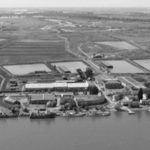UDC 599.735.53:591.5
Lushchekina A.A., Karimova T.Yu., Neronov V.M. ARID ZONE UNGULATE SPECIES LISTED IN THE RED DATA BOOK OF THE RUSSIAN FEDERATION // Arid Ecosystems. 2022. Vol. 28. № 4 (93). P. 104-114. | PDF
Over the last hundred years biodiversity has decreased dramatically across the globe. Currently, there are more than 142,500 species listed in the IUCN Red List, with more than 40,000 species threatened with extinction (The IUCN…, 2022). Red Data Books of various levels are the lists of rare and threatened species, with the description of their past and present distribution, characteristics of reproduction, and current and needed conservation actions. Red Data Books provide a formal legal basis for establishing a legally binding framework for the protection of the listed species.
The new edition of the Red Data Book of the Russian Federation (2021) includes four species of ungulates, that play an important role in steppe and desert biocoenoses. Two of them do not occur in the wild in Russia any more–the Przewalski’s horse (Equus przewalskii Poljakov, 1881) since the 19th century and kulan (Equus hemionus Pallas, 1775) since the early 20th century, and the status of saiga antelope (Saiga tatarica Linnaeus, 1766) and the Mongolian gazelle (Procapra gutturosa Pallas, 1777) populations raise the serious concerns.The dropout of members of these species from ecosystems would cause not only the loss of biodiversity of arid bioms but also their degradation.
The kulan was for the last time observed in Transbaikalia in Russia in 1926 and plans of this species reintroduction into the wild in Dauria and Transbaikalia have been discussed for almost 20 years, but the implementation of reintroduction project may carry a high level of risks in many aspects.
The size and status of the Mongolian gazelle population in Russia, at the northern edge of the species natural range, largely depends on the status of the species in Mongolia. The Mongolian gazelle became extinct in Altai, Tuva, and Transbaikalia in the 1970s–1980s but the growth of the North Kherlen population in Mongolia that began in the 1990s had led to the restoration of winter migrations of the Mongolian gazelle to the South Eastern Transbaikalia, while favourable weather conditions and effective protection measures implemented in two Biosphere Nature Reserves (Daursky and Sokhondinsky) and «the Valley of Dzeren» Federal Reserve had resulted in establishing several resident groups of these ungulates (Kirilyuk, Lushekina, 2017), with the total number of animals currently reaching 20,000 individuals (Kirilyuk, 2021).
It is the first time that the saiga antelope has been included in the Red Data Book of the Russian Federation. Even in the 1980s, the total population size amounting to about 400 thousand animals did not raise any concern. However, overhunting, extensive agriculture, loss of suitable habitats, poaching, economic crisis, and suspension of the work of the wildlife conservation authorities all caused the dramatic reduction in saiga numbers in the Northwest Pre-Caspian region that had dropped to 4,000–5,000 individuals by 2015 (Karimova, Lushekina, 2018).
Not long ago, all of these three species were considered as game animals. However, ecologically unsustainable types of economic development of arid areas (ploughing and reclamation of lands, overgrazing, building of roads and other technical constructions without consideration of regional specifics, etc.) contributed, directly or indirectly, to the decline of the species ranges and affected seasonal migrations and spatial distribution of animals, which eventually resulted in the decline of the populations, increased vulnerability of animals to extreme weather conditions (snowy winters, droughts, wildfires, etc.), and high pressure of legal and illegal hunting. The future of these unique animals depends primarily on the humans and their attitudes towards their natural environment. The thriving of these species will be supported by the implementation of measures developed by experts and listed in the Red Data Book of the Russian Federation, as well as in the approved species conservation strategies.
Keywords: Red Data Book, species conservation, the kulan, the saiga antelope, the Mongolian gazelle.
Funding. The work was carried out on the topic of research at the Severtsov Institute of Ecology and Evolution of the Russian Academy of Sciences, State Task No. 1021062812203-8 «Fundamental problems of wildlife conservation and rational use of biological resources».
DOI: 10.24412/1993-3916-2022-4-104-114
EDN: LKRARA










